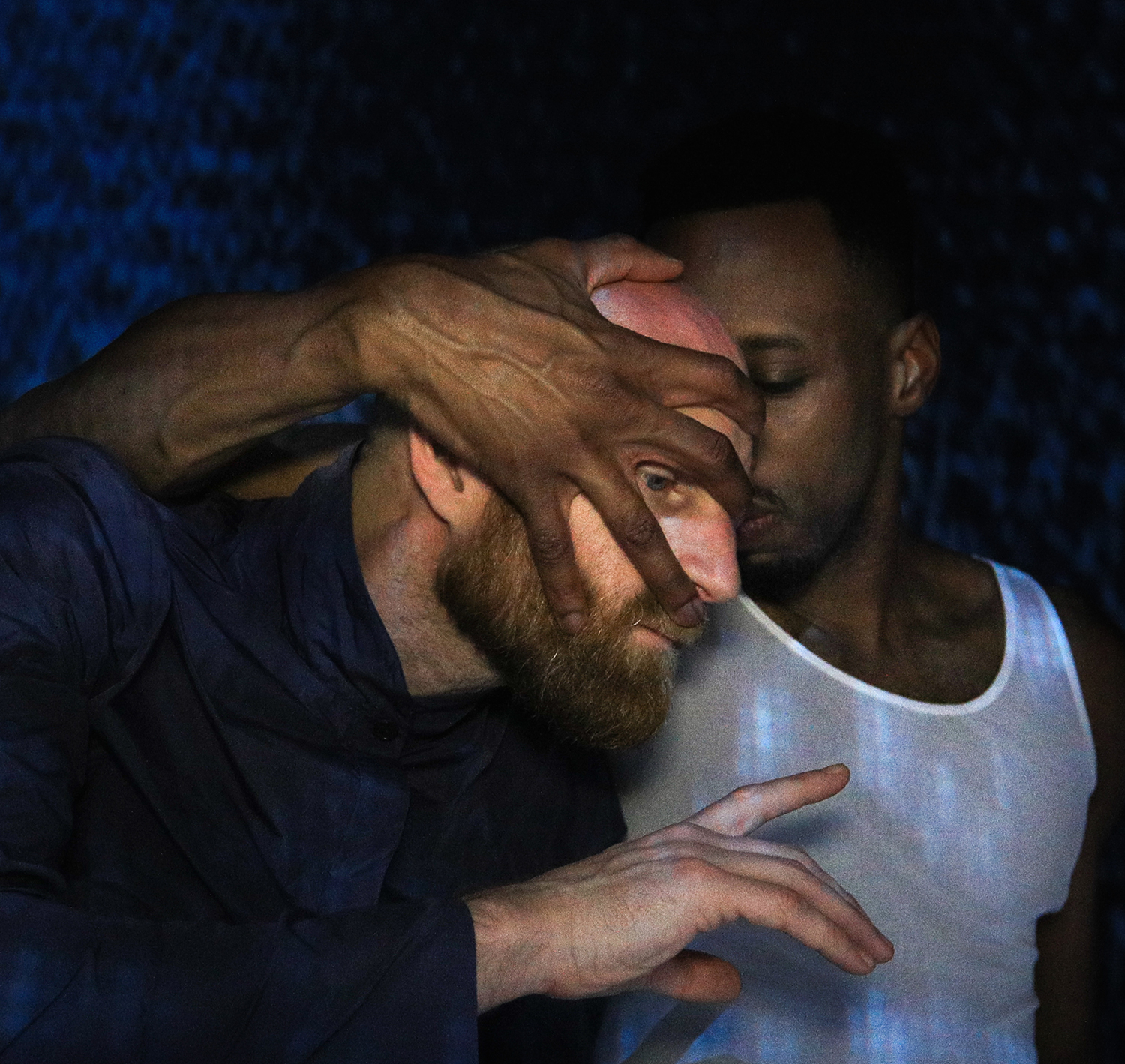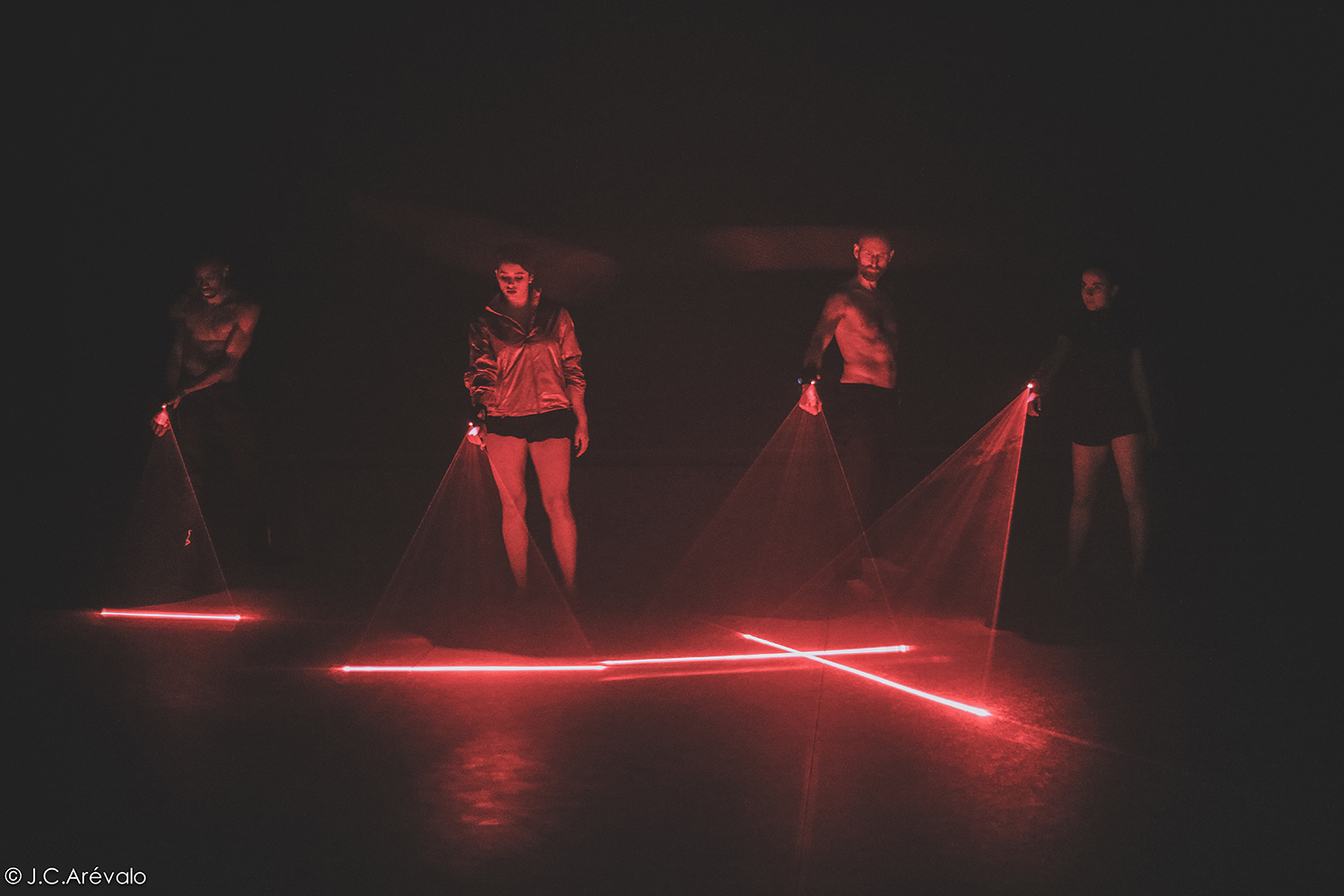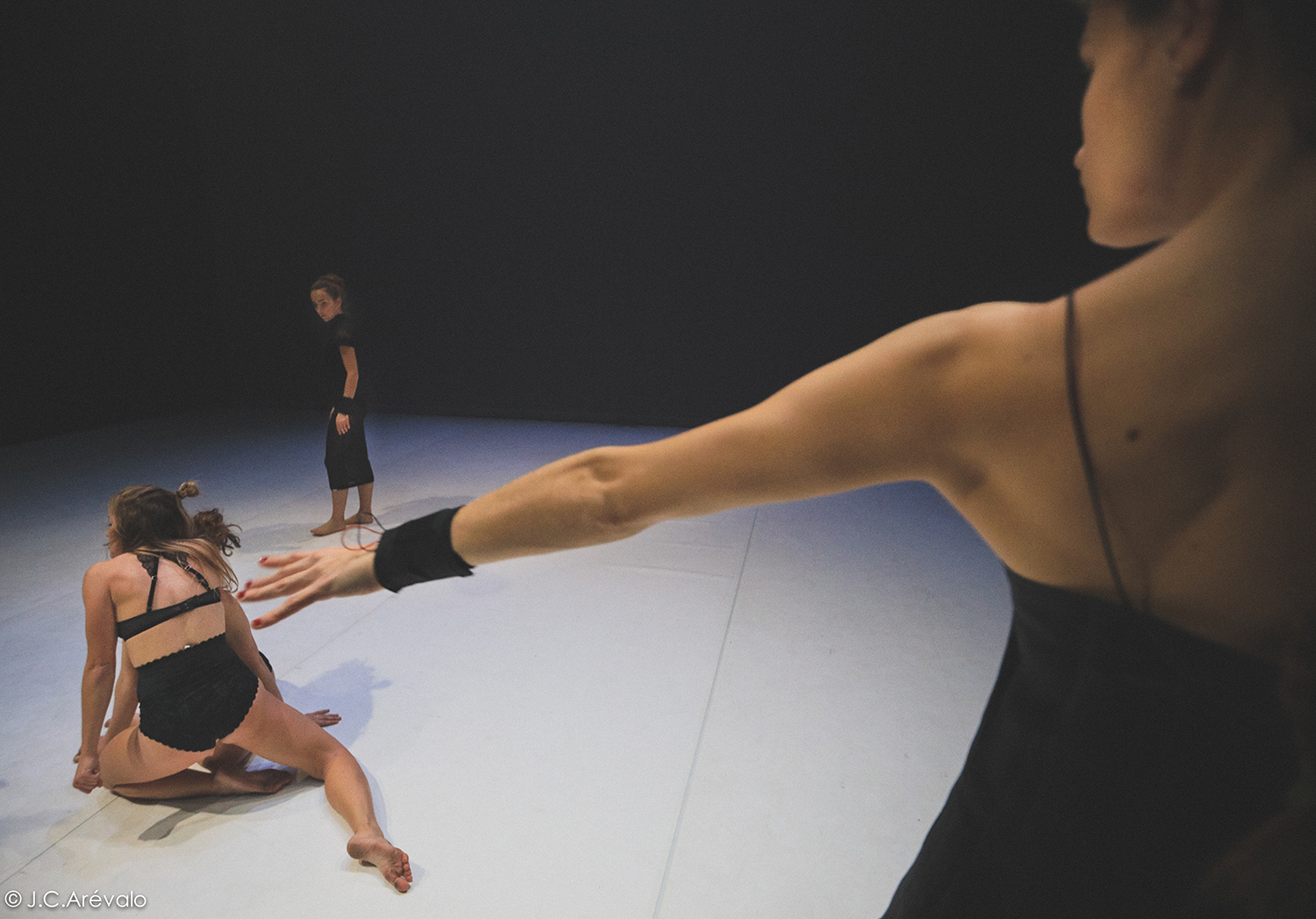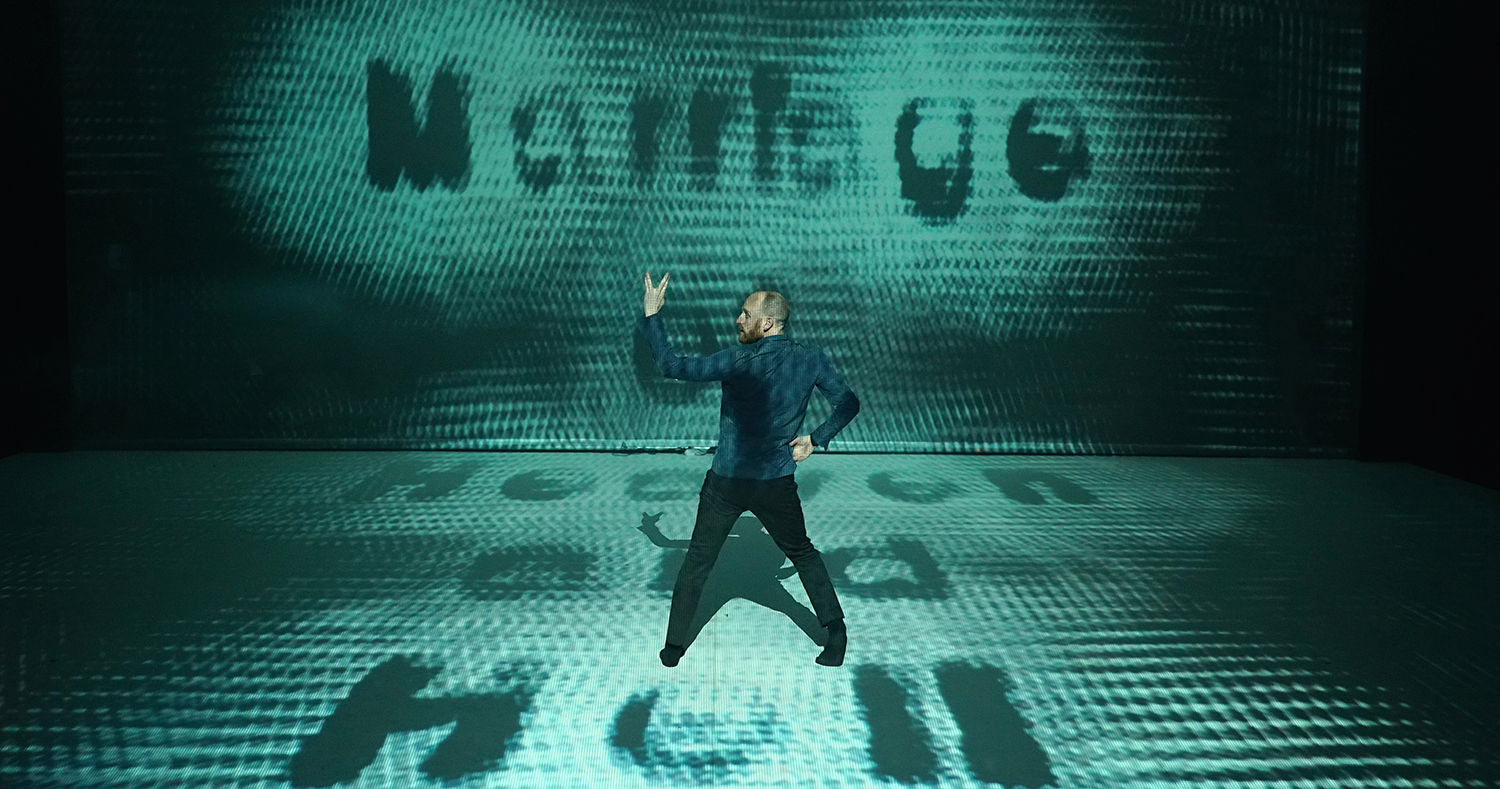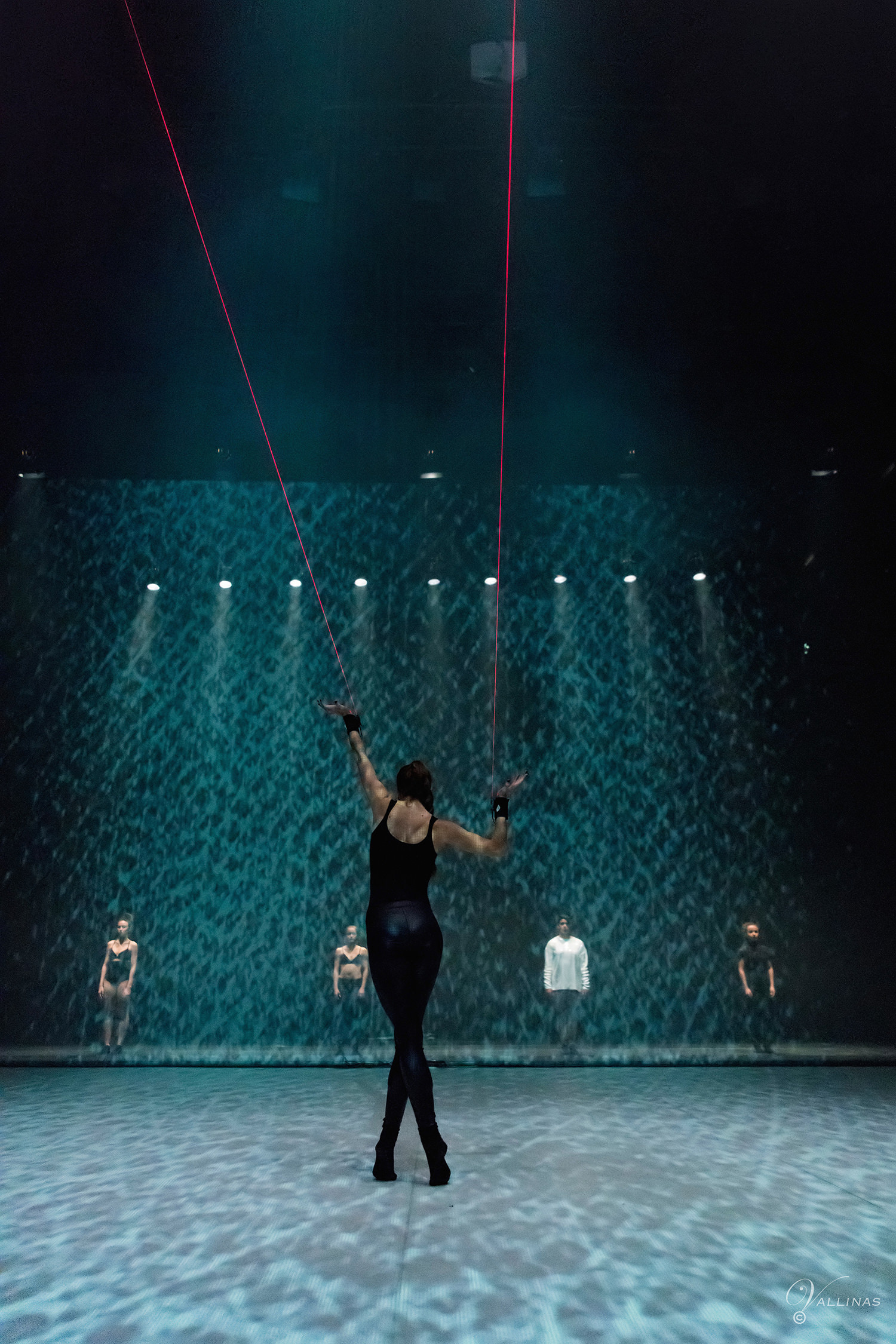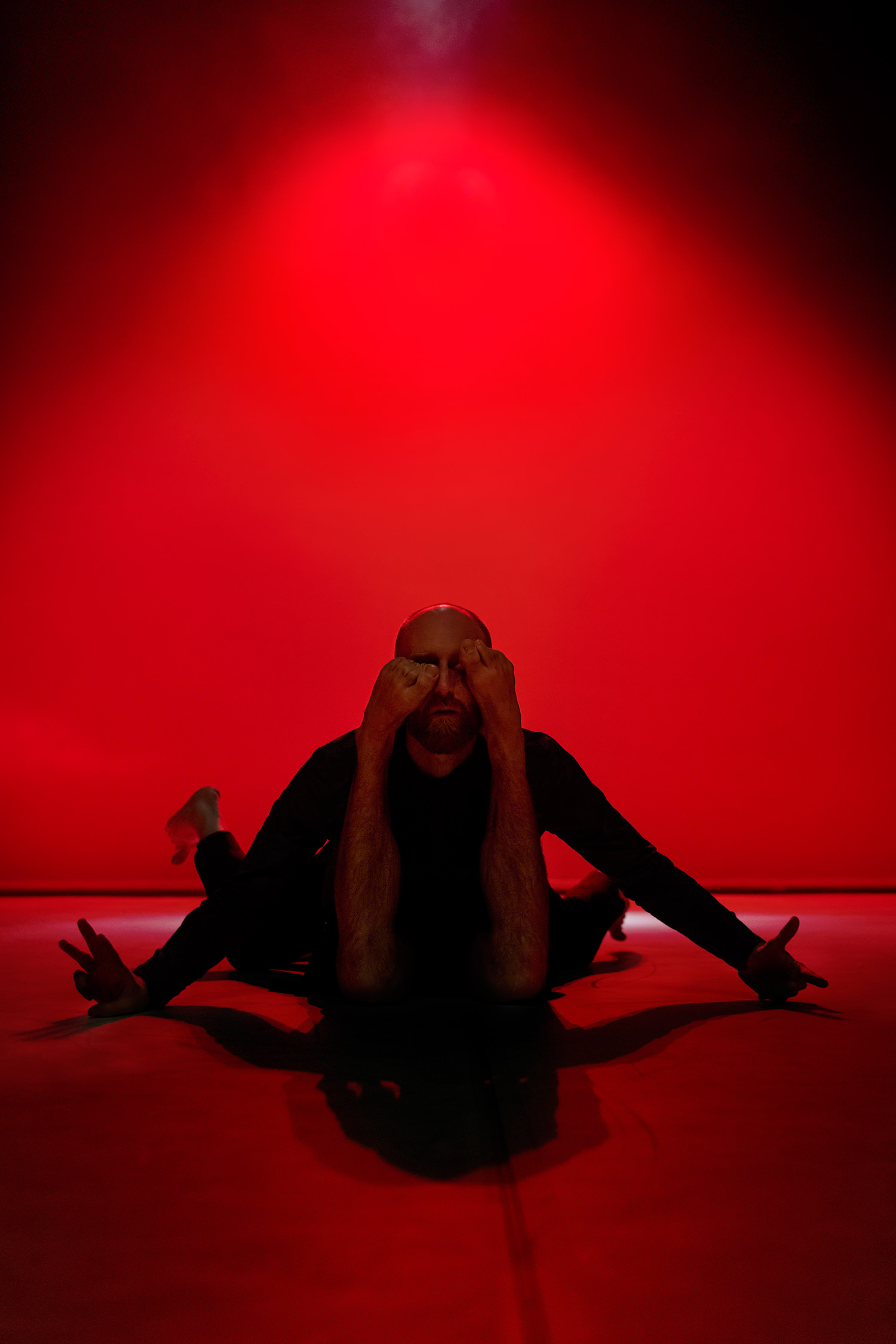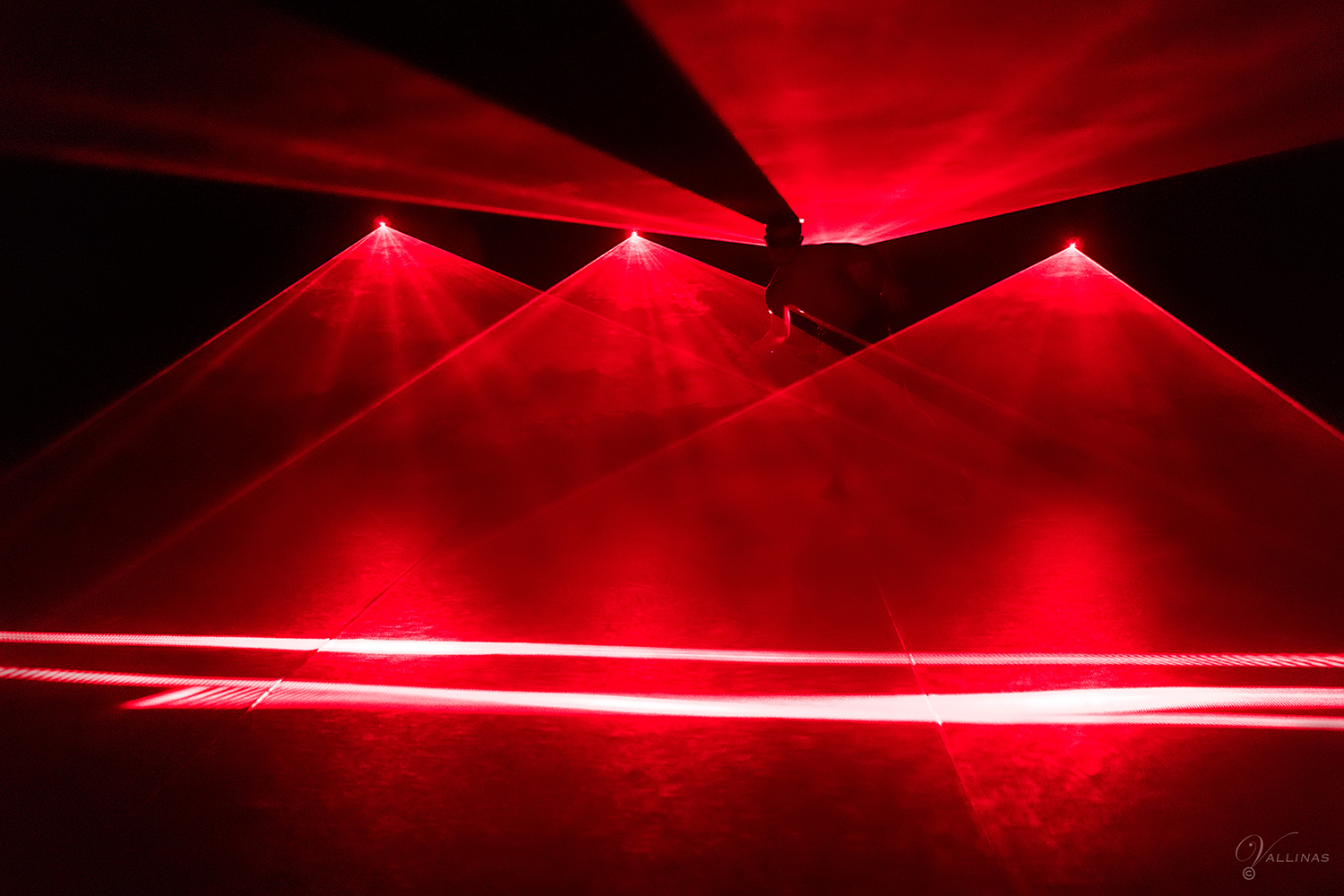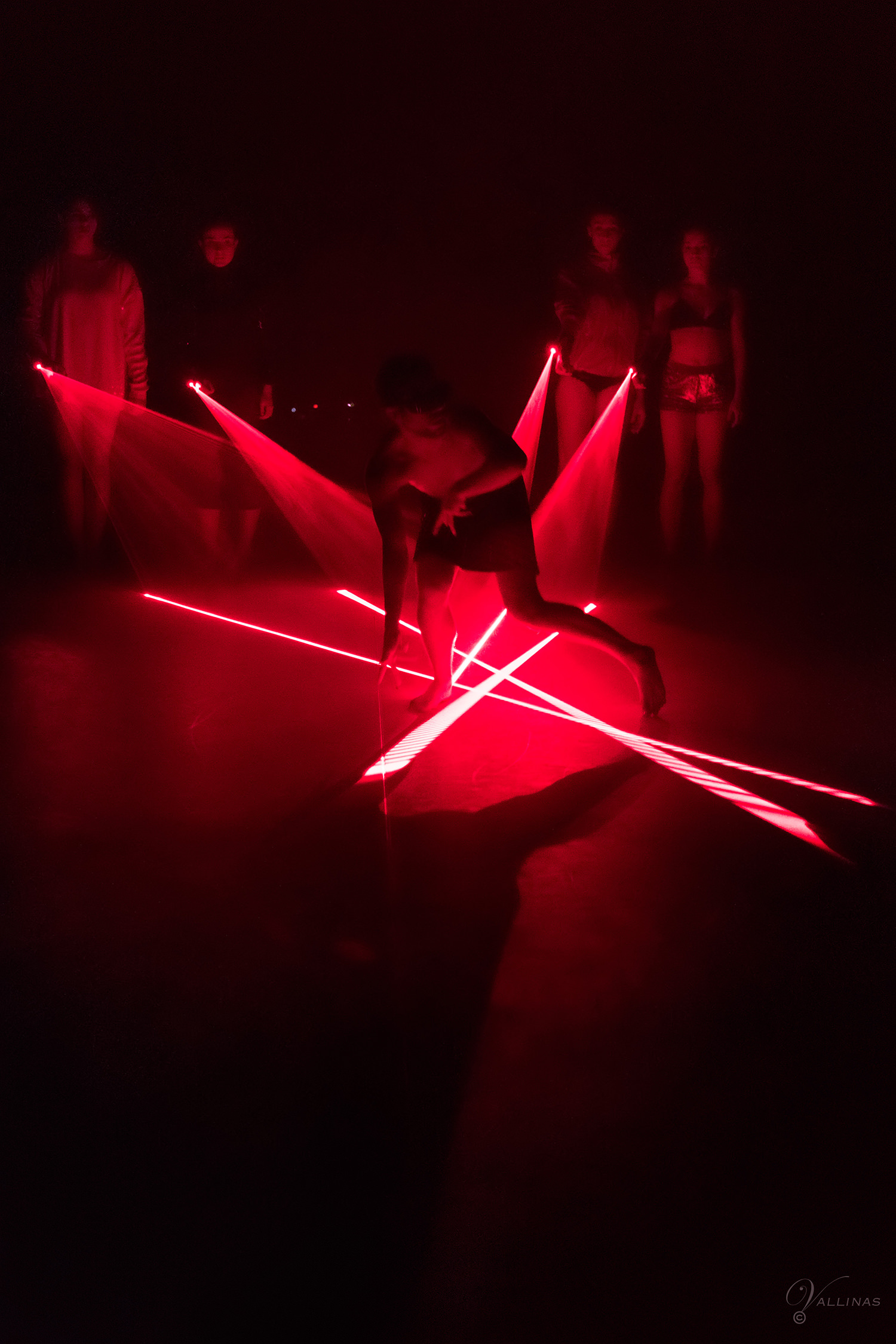2017-2018
Scenic production based on William Blake’s iconic work, that combines dance, electroacoustic composition, interactive technology and cognitive science in a scenic format.
The central core of Blake is the restoration of the union of apparently irreconcilable opposite pairs, because, as the poet said “without opposites there is no progress”. On the one hand, there is the virtuous clarity of techno-scientific rational thinking (heaven, logos) and on the other, the perverse and overwhelming creative forces of imagination and instinct, which emerge from body energy (hell, mythos).
“Blake’s original work defies genres by organically combining a great variety of elements: from illustrations, poems, parodies, an original mythology, a political anthem or religious manifests, to an entire theory of perception and several descents into the underworld. In our scenic vision, these elements emerge from the body of the dancers in the form of audible entities and visual imagery developed using high technology: models of artificial intelligence and sound synthesis connected in real time to the movements of the dancers.
The coupling between the bodies on the stage and the interactive digital technology extends the body energy of the dance to other sensory modalities such as acoustics and visual imagery. The proposed work is bridging a gap between abstract techno-scientific thinking and the concrete experience of the body”, the Stocos Institute explains.
The work analyses expressive aspects of body movement, such as energy, fluidity, symmetry or impulsivity, translating them (in real time) into audible and visual digital abstractions. The Stocos Institute transforms the scenic space into a reactive environment which springs from the body activity of the dancers. It explores the limits of choreographic imagination and creates an augmented reality of dance.




